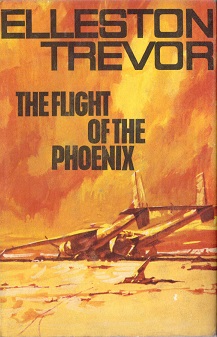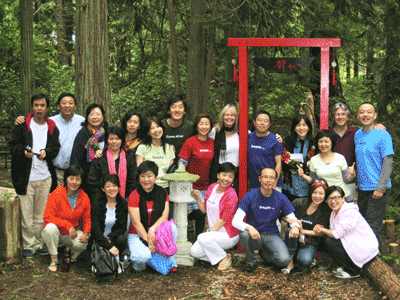The Flight of The Phoenix: A Metaphor for KITS
Denise Goldbeck, creator of Kids In The Spotlight, likens the program to The Flight of The Phoenix, an exciting story of daring, determination and ingenuity.
Denise Goldbeck, creator of Kids In The Spotlight, likens the program to The Flight of The Phoenix, an exciting story of daring, determination and ingenuity.
The Flight of the Phoenix is a 1964 novel by Elleston Trevor (made into a film twice – 1965, starring Jimmy Stewart, and 2004, starring Dennis Quaid).
A cargo plane crashes in the Sahara Desert during a violent sandstorm. Twelve men and a monkey survive. The passengers are a mixed bag of people traveling from the oil town Jaghbub on their way to Benghazi – among them oil workers, a couple of British soldiers, a British aeronautical engineer, and a young German who had been visiting his brother. They stare without hope at the desert sky: search planes will not seek their unscheduled flight. On board the plane is a cargo of dates, but very little water.
An attempt to walk out to civilization proves unsuccessful. Things look bleak for the ragtag group of survivors. As the water begins to run out and things look their worst, the British aeronautical engineer, a precise, arrogant and somewhat irritating man who has been measuring, calculating, drawing and scribbling equations in a solitary manner, pitches a radical idea to the group. His name is Stringer. Stringer’s idea is to cobble together an aircraft from the remaining parts that can be reborn and with the passengers strapped to the wings fly to the outskirts of Benghazi. The craft is dubbed Phoenix, after the legendary bird that rises from its own ashes.
The effort to refashion Phoenix according to Stringer’s precise plans and calculations from the damaged parts of the plane crash is enormous and very taxing on the survivors, who are now depending on early morning condensation for mere drops of water. Herculean effort is rewarded and the survivors, with engineering direction from Stringer, are able to hobble together the Phoenix to make her flight worthy.
The time for the launch of the Phoenix is set for the next morning. Suddenly it is revealed that although Stringer’s education in aeronautical engineering is identical to that of engineers who design full size planes, his experience in actual aircraft design has been limited to model airplanes – for which he has a passion. Outrage meets this revelation. Stringer defends himself by saying that all the same principles apply, no matter the size of the craft.
Despite recriminations and misgivings, the survivors ultimately follow Stringer’s lead and strap themselves to the wings of Phoenix, successfully start the engine, and miraculously become airborne, flying safely to Benghazi.
How does this story serve as a metaphor for KITS?
We take leading children’s and youth groups as seriously as if we were leading the United Nations. Each child is an integral part of the group and we honour every aspect of their development and potential in a profound way. We don’t take a casual approach just because the program is only for kids. We take the mounting of the musical as seriously as if we were on Broadway.
This means that when youth interns are leading a Kids in the Spotlight program they are using the same principles that are used with groups of peers or adults. Whether you are running a big company, a start-up, a country, or the high school year book committee, the same leadership principles apply. Even though we are doing a model version of a musical, all the leadership methods and production aspects that we use are the very same as if we were doing something on a larger scale in a real-world setting. What you learn as a youth leader in KITS will be directly transferable to your every day life, now and in the future!






